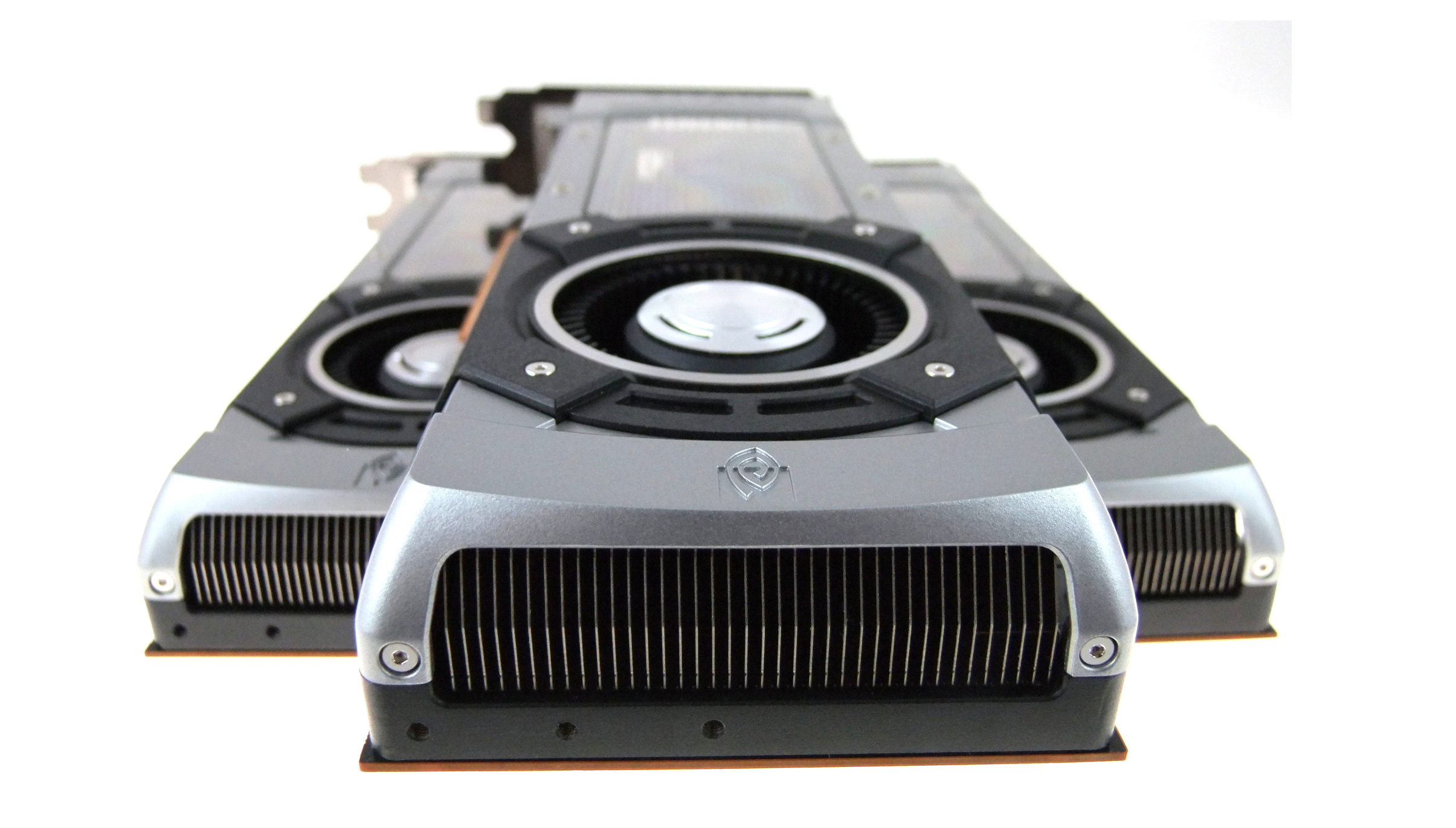Our Verdict
A gloriously slick engineering spectacle, and offers the best PC gaming experience for those that can afford it, but is priced artificially away from common sense and out of most of our reach.
PC Gamer's got your back
When I first saw the Nvidia GeForce GTX Titan a couple weeks before launch Nvidia's Tom Petersen explained that it was their “love story to gamers. It looks great, it sounds great and it has great performance.” And while he is right on pretty much all fronts, the GTX Titan is likely to only ever be a matter of unrequited love for all but a tiny percentage of PC gamers. When you price up a single graphics card at the same price as a performance gaming PC, that's immediately most of your audience cut out.
So what is it? This is the fastest single-GPU graphics card on the planet and the very top-end of Nvidia's Kepler architecture. We knew when the GTX 680 launched that it wasn't home to the full-fat Kepler core - that was held over for the Tesla range of professional graphics cards, which need the amount of double precision compute performance the top GK110 GPU affords.
We also knew it was only a matter of time - when Nvidia could manufacture enough of the GPUs to be able to satisfy the demand for the Tesla and a gaming SKU of the same silicon - before we saw it on our desktops.
This GK110 chip in the GeForce GTX Titan has got over 1,000 more CUDA cores in it than the GTX 680 and in the performance stakes that shows.
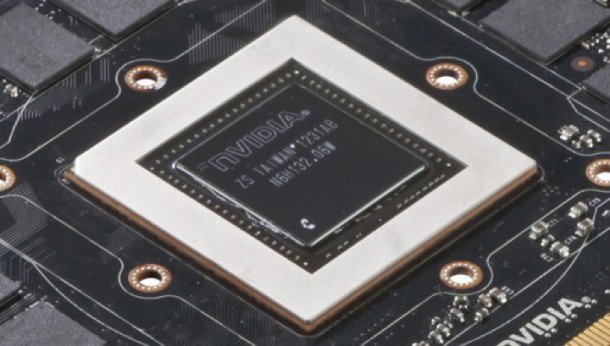
At worst it's a third quicker than the GTX 680 and more often around 50% faster. It's not quite as good a showing against the HD 7970 GHz edition though, and that makes the Titan feel like it's not quite fast enough.
I hate to keep going on about price - Nvidia are clearly stating with this price-tag that if you have to ask, you can't afford one - but when it's more than twice the price of the nearest single-GPU card you'd want it to get close to twice the performance.
There's also the fact the GeForce GTX Titan consistently runs slower than the two multi-GPU cards from Nvidia and AMD, the GTX 690 and the HD 7990.
And those are also cheaper cards.
Now, personally, I'm not a massive fan of multi-GPU - when it works it's the fastest you can get, but most of the time it doesn't, or at least doesn't work well. So, having a card that gets close to SLI performance with a single GPU is tantalising, however the received wisdom would state there ought to be at least price-parity between a faster, awkward card and a slower, more well-behaved card.
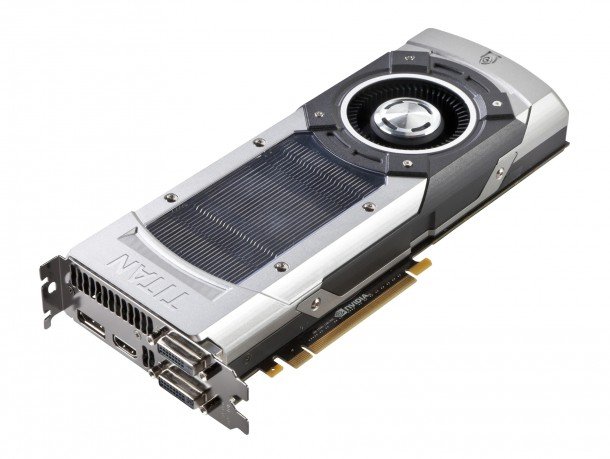
All this said, I must admit it is an incredibly desirable card. You have one in your hands and you want it. It's been beautifully engineered and you'll want a chassis that can show it off if you have one. And it's not all about show either: Nvidia have used a similar cooling design to the one they used for the GTX 690, with vapour-chamber chiller and tall fin stacks in the heatsink. That's important because the new iteration of GPU Boost that accompanies this release now sets clockspeed according to temperature - not power. If the GPU runs cooler it will run faster. In my tests I was consistently hitting over 1GHz without any manual overclocking, and it was happy to run at around 1175MHz with a little light chip-cooking.
You might expect the cooler to be a bit of a turbine though, having to keep such a massive chip cool (it's jamming 7 billion transistors into a 520mm squared chunk of silicon), but it's incredibly quiet. In fact without manually overclocking the card you'll rarely hear it. In my test rig it was the PSU and CPU fans that overshadowed even a triple-SLI TItan setup running at 100% load.
But should you buy one?
Well, only if you didn't bat an eyelid at the price-tag. Otherwise there's no way to justify spending out on one unless you're into 3D modelling or have a large, triple-screen setup. It will give you the best PC gaming experience around - multi-GPU cards may be faster, but the vagaries of SLI or CrossFireX make them less than optimum experiences for the vast majority of us. It's also incredibly quiet, has a lower power requirement than AMD's HD 7970 GHz edition and runs at near SLI speeds.
But it's been designed and priced for the elite - the 'ultra-enthusiast' as Nvidia call them - the class of gamers that aren't necessarily worried about the tech and just want the fastest, bestest experience around. And for the folk that don't want to get their hands dirty with multi-GPU shenanigans, this is it.
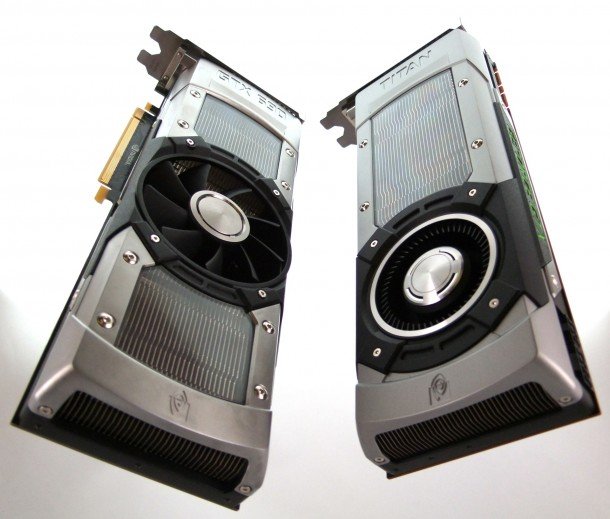
"You're going to see some people who just say, I want maximum frame rate," says Nvidia's Tom Petersen. "And if you want maximum frame rate, GTX 690 is you. If you want the best experience, if you want the best acoustics, then Titan is for you."
This release may be tinged with sadness for us graphics geeks: this is the peak, the fastest single-GPU card around now, and probably for the next few years too. But even sadder is the possibility that the majority of people who end up owning a GTX Titan - in whatever high-spec machine they've had built for them - might not even be able to tell you what card they've got.
Lucky buggers...
You want benchmarks? I got benchmarks...
All these single-card benchmarks were run on an open testbench with a stock-clocked Intel Core i7-3770K @ 3.5GHz, with 16GB RAM. The game settings were set to the highest available, at 2560x1600 wit 4x AA.
DirectX 11 tessellation performance
Heaven 3.0 – FPS: higher is better
Nvidia GTX Titan – 55.6
EVGA GTX 690 – 70.6
Club3D HD 7990 – 65
Sapphire HD 7970 GHz – 38.3
EVGA GTX 680 – 41
DirectX 11 gaming performance
Batman: Arkham City – FPS: higher is better
Nvidia GTX Titan – 98
EVGA GTX 690 – 106
Club3D HD 7990 – 89
Sapphire HD 7970 GHz – 68
EVGA GTX 680 – 65
DiRT Showdown – FPS: higher is better
Nvidia GTX Titan – 64
EVGA GTX 690 – 70
Club3D HD 7990 – 78
Sapphire HD 7970 GHz – 67
EVGA GTX 680 – 48
Max Payne 3 – FPS: higher is better
Nvidia GTX Titan – 43
EVGA GTX 690 – 56
Club3D HD 7990 – 50
Sapphire HD 7970 GHz – 38
EVGA GTX 680 – 30
Sleeping Dogs – FPS: higher is better
Nvidia GTX Titan – 32
EVGA GTX 690 – 38
Club3D HD 7990 – 47
Sapphire HD 7970 GHz – 28
EVGA GTX 680 – 22
DirectX 11 1080p performance
Shogun 2 – FPS: higher is better
Nvidia GTX Titan – 108
EVGA GTX 690 – 124
Club3D HD 7990 – 127
Sapphire HD 7970 GHz – 89
EVGA GTX 680 – 85
PCGamer value metrics
Heaven 3.0 - £/FPS: lower is better
Nvidia GTX Titan – £14.91
EVGA GTX 690 – £10.62
Club3D HD 7990 – £10.77
Sapphire HD 7970 GHz – £8.88
EVGA GTX 680 – £9.54
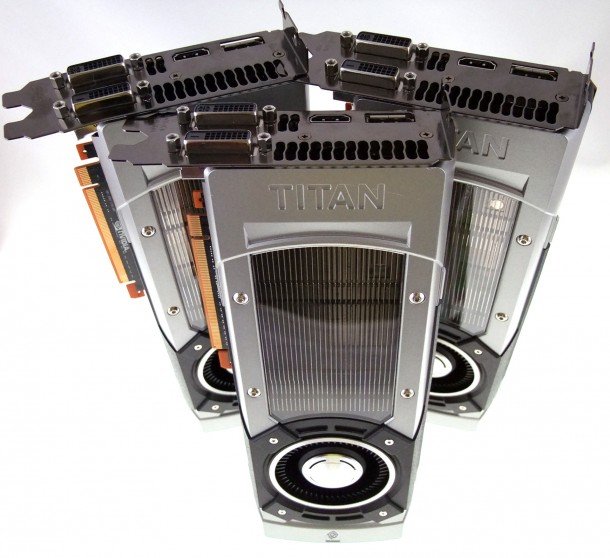
SLI performance
These SLI benchmarks were run on an X79 setup running an eight-core (sixteen threads!) Intel Xeon E5-2687W @ 3.1GHz, again running at 2560x1600 with 4x AA.
DirectX 11 tessellation performance
Heaven 3.0 – FPS: higher is better
GTX Titan – 55.6
Two-way Titan SLI – 97.8
Three-way Titan SLI – 137.2
DirectX 11 gaming performance
DiRT Showdown – FPS: higher is better
GTX Titan – 64
Two-way Titan SLI – 81
Three-way Titan SLI – 93
Max Payne 3 – FPS: higher is better
GTX Titan – 43
Two-way Titan SLI – 72
Three-way Titan SLI - 94
A gloriously slick engineering spectacle, and offers the best PC gaming experience for those that can afford it, but is priced artificially away from common sense and out of most of our reach.

Dave has been gaming since the days of Zaxxon and Lady Bug on the Colecovision, and code books for the Commodore Vic 20 (Death Race 2000!). He built his first gaming PC at the tender age of 16, and finally finished bug-fixing the Cyrix-based system around a year later. When he dropped it out of the window. He first started writing for Official PlayStation Magazine and Xbox World many decades ago, then moved onto PC Format full-time, then PC Gamer, TechRadar, and T3 among others. Now he's back, writing about the nightmarish graphics card market, CPUs with more cores than sense, gaming laptops hotter than the sun, and SSDs more capacious than a Cybertruck.
